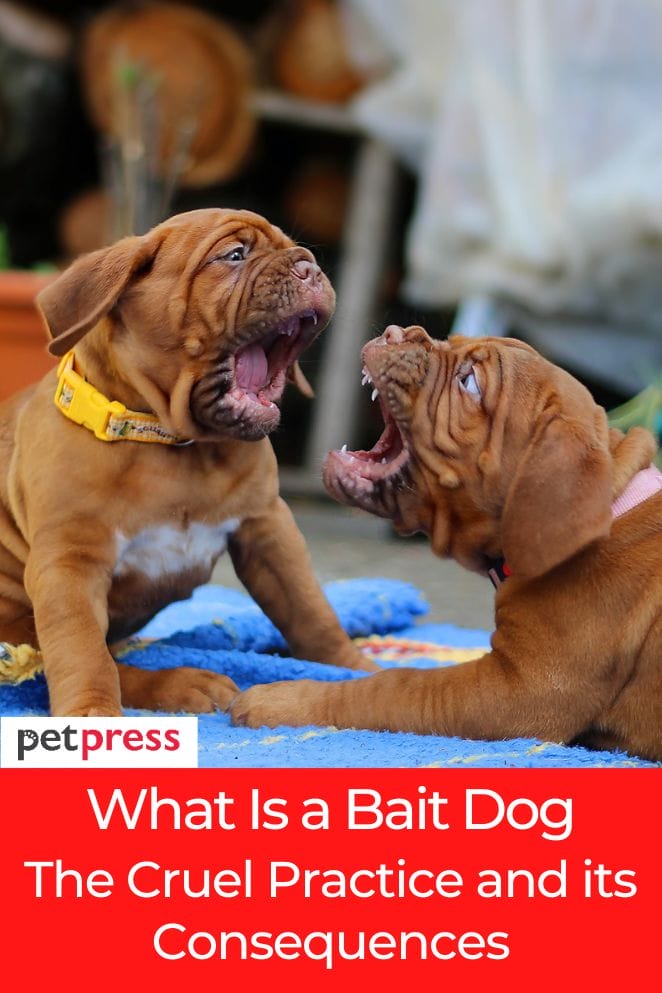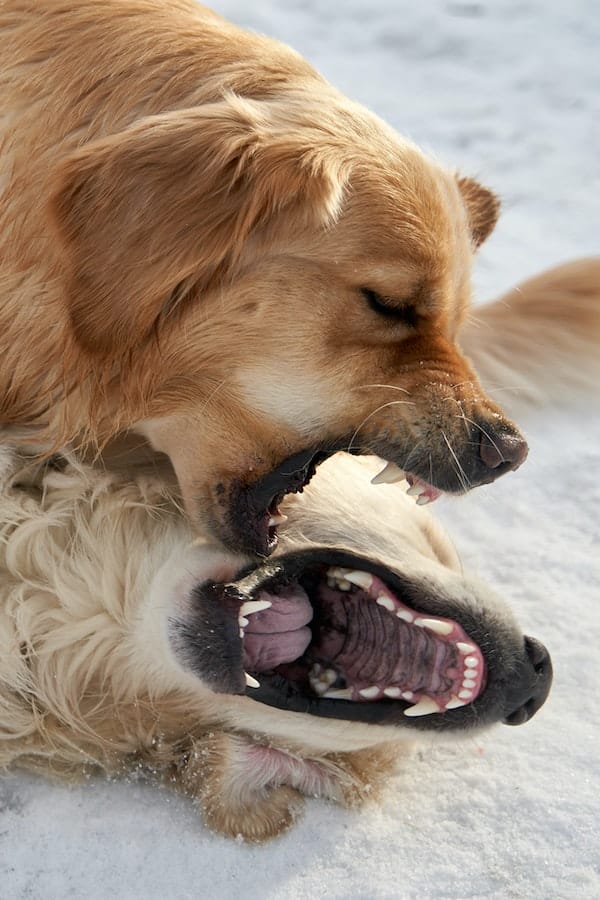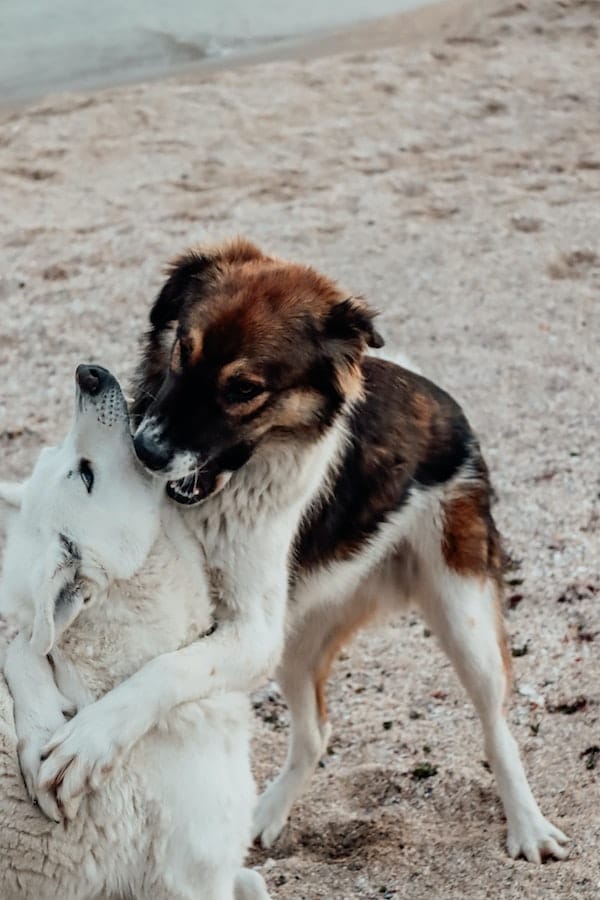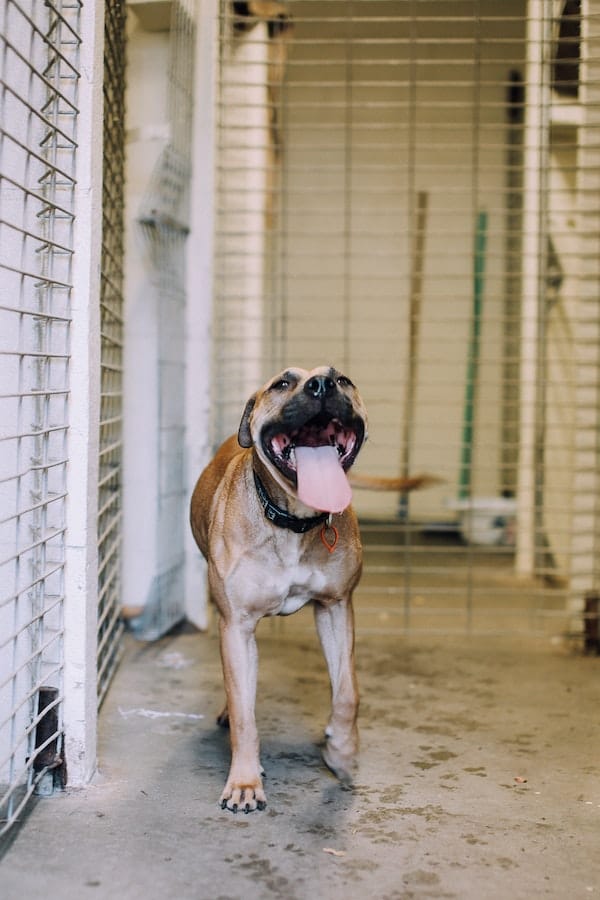
In the dark underbelly of animal cruelty exists a horrific practice known as dog fighting.
Within this severe world, certain canines are designated as “bait canines” and exposed to unbelievable abuse.
This article means to reveal insight into the idea of a bait dog, the cruel practice of dog fighting, the consequences for these innocent creatures, and the efforts to rescue, rehabilitate, and raise awareness to light about this issue.
What is a Bait Dog
A bait dog refers to a helpless and defenseless dog used as a victim in dog fighting.
Bait dogs are selected for their perceived vulnerability and are deliberately placed in the fighting arena to be attacked and brutalized by trained fighting dogs.
This despicable practice aims to enhance the fighting dogs’ aggression and hone their skills.
Dog fighting is an illegal and barbaric activity that includes two dogs set in opposition to one another in a merciless battle for entertainment and gambling purposes.
These battles result in extreme injuries, trauma, and even death for the dogs involved.
Bait dogs are used to prepare for fighting dogs by training them to attack and overpower a defenseless victim.
Bait dogs are chosen for their gentle nature, submissive behavior, or physical characteristics that make them easy targets.
They are often stolen pets or obtained through illegal means.
Bait dogs may be tied up, muzzled, or immobilized to prevent them from fighting back or escaping during training sessions.
The deliberate torment they endure is heartbreaking and goes against our moral and ethical responsibilities towards animals.

What Happens to Bait Dogs?
The outcome of being a bait dog is often tragic.
Bait dogs are exposed to physical and emotional trauma, including deep puncture wounds, lacerations, broken bones, infection, disease, and even death.
Characteristics and identification of bait dogs
Bait dogs can come in various breeds, sizes, and ages.
They are typically chosen for their perceived vulnerability and non-aggressive temperament.
Some common characteristics of bait dogs include scars, puncture wounds, torn ears, broken teeth, and emaciation.
These signs demonstrate the actual abuse they have endured on account of their tormentors.
The physical and emotional trauma experienced by bait dogs
Bait dogs endure unimaginable physical and emotional suffering.
They experience the suffering effects of extreme wounds, like deep wounds, broken bones, and internal damage.
Furthermore, the mental trauma they experience can appear as fear, anxiety, and aggression.
Bait dogs often require extensive medical treatment, rehabilitation, and specialized care to recover from their ordeal.
The legal consequences of bait dog fighting
Dog fighting, including the use of bait dogs, is illegal in many jurisdictions because of its innate brutality and related crimes.
Participating in dog fighting can result in serious legal consequences, including fines, imprisonment, and restrictions on owning animals.
Stricter implementation of these regulations is important to fight this terrible practice and protect innocent animals.

The Rescue of Bait Dogs
Fortunately, there are organizations devoted to rescuing and rehabilitating bait dogs.
These rescue groups provide the necessary medical treatment, behavioral therapy, and emotional support to help these animals recover from their traumatic experiences.
Rescue and Rehabilitation Efforts
Dedicated animal welfare organizations, shelters, and rescue groups play a crucial role in rescuing and rehabilitating bait dogs.
These organizations provide medical care, rehabilitation programs, and behavioral support to help these dogs recover physically and emotionally.
They work tirelessly to give bait dogs a chance at a new life filled with love, safety, and compassion.
Educating the Public and Raising Awareness
Raising public awareness about the brutal act of dog fighting and the predicament of bait dogs is fundamental in fighting this issue.
Educational campaigns, community outreach programs, and social media initiatives can assist with educating the public about the indications of dog fighting, the consequences for the creatures involved, and the significance of revealing any suspected cases.
The Role of Animal Welfare Organizations
Animal welfare organizations actively advocate for stronger animal protection laws, support investigations into dog fighting rings, and provide resources for reporting and combating this illegal activity.
They also work towards promoting responsible pet ownership, spaying/neutering, and humane education to prevent the cycle of abuse.
Recognizing the Signs of Bait Dog Abuse
It is crucial for individuals to be able to recognize the signs of bait dog abuse to help protect these innocent animals.
Some signs include visible injuries, scars, unusual behavior around other dogs, fearfulness, and signs of neglect or mistreatment.
If you suspect bait dog abuse, report it immediately to local authorities or animal welfare organizations.
Reporting Bait Dog Fighting and Cruelty
Reporting suspected bait dog fighting or any form of animal cruelty is essential in combating this illegal activity.
Contact your local animal control, law enforcement, or animal welfare organizations to provide them with detailed information, including any proof or eyewitness accounts.
Your report could save lives and help with dealing with the culprits.

How to Help Bait Dogs?
There are various ways to help bait dogs and support animal welfare organizations.
Individuals can donate funds or supplies to rescue groups, volunteer their time and skills, educate the public about this issue, or report any suspected cases of dog fighting or animal cruelty.
Every small action helps contribute to providing these animals with a brighter future.
Rehabilitation and Rehoming of Bait Dogs
Rehabilitating and rehoming bait dogs require a compassionate and patient approach.
Specialized rehabilitation programs focus on rebuilding their trust, addressing their physical and emotional needs, and gradually reintroducing them to positive interactions with humans and other animals.
Responsible adoption processes ensure that these dogs find loving and safe forever homes.
Adopting a Former Bait Dog
Adopting a former bait dog can be a compensating experience, yet it requires responsibility, patience, and understanding.
These dogs might require extra care, training, and ongoing support to conquer their horrible past.
However, witnessing their resilience, transformation, and unconditional love can be immensely gratifying for adopters.

Conclusion
The presence of bait dogs inside the world of dog fighting is a demonstration of the depths of human cruelty.
However, through deliberate efforts in rescue, rehabilitation, education, and advocacy, we can make a difference.
By bringing issues to light, reporting abuse, supporting animal welfare organizations, and promoting responsible pet ownership, we can pursue eradicating the act of dog fighting and guaranteeing a more promising time to come for all animals.
FAQs
You can help bait dogs by supporting local animal welfare organizations, reporting suspected cases of dog fighting, spreading awareness about the issue, and considering the adoption or fostering of former bait dogs.
No, bait dogs are victims of cruelty and are not inherently dangerous or aggressive. They have often been selected for their gentle nature and lack of aggression.
Look for signs of physical injuries, scars, neglect, and unusual behavior around other dogs. If you suspect bait dog abuse, report it to the appropriate authorities.
Yes, with proper care, rehabilitation, and patience, bait dogs can be rehabilitated. Many have gone on to live happy and fulfilling lives as beloved pets.


GIPHY App Key not set. Please check settings